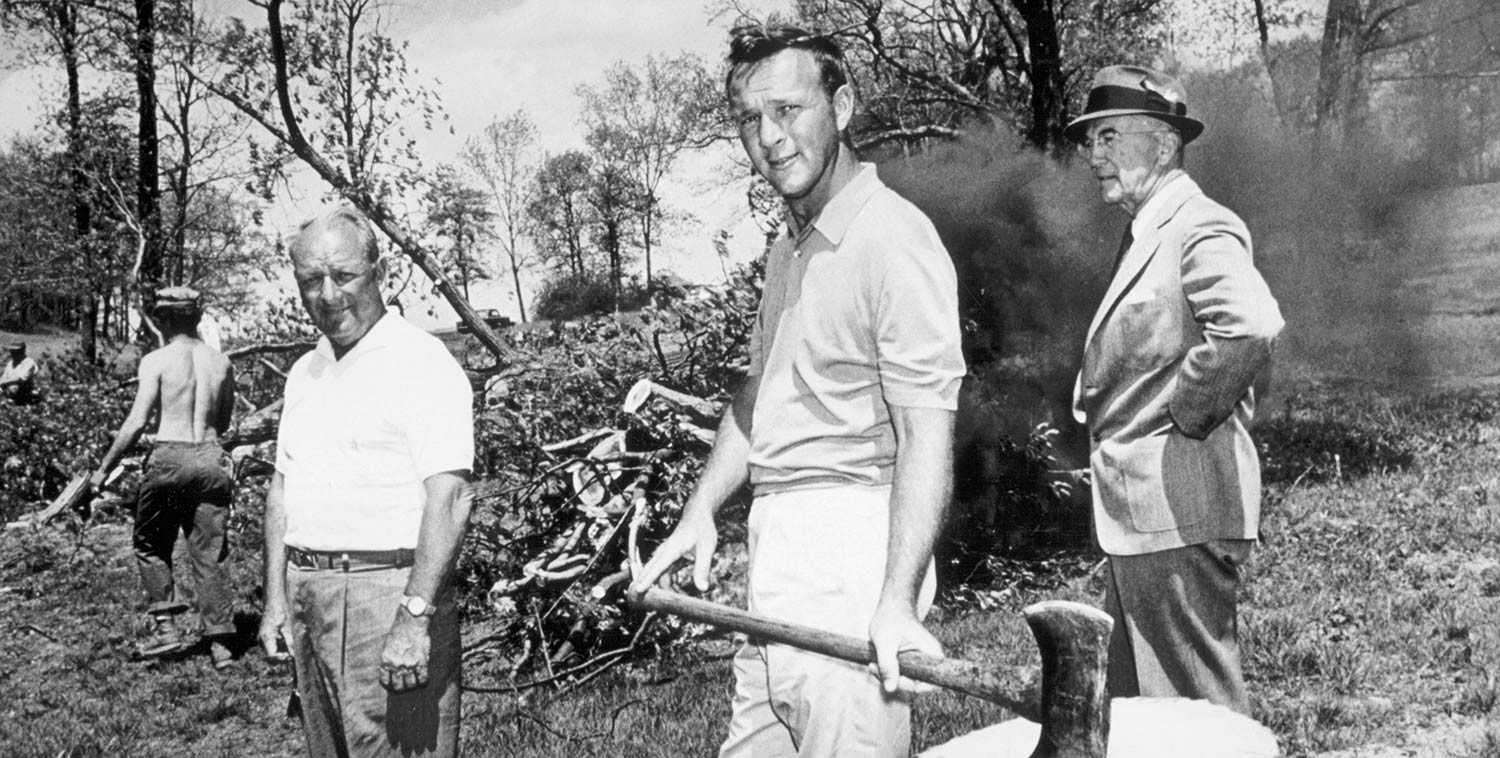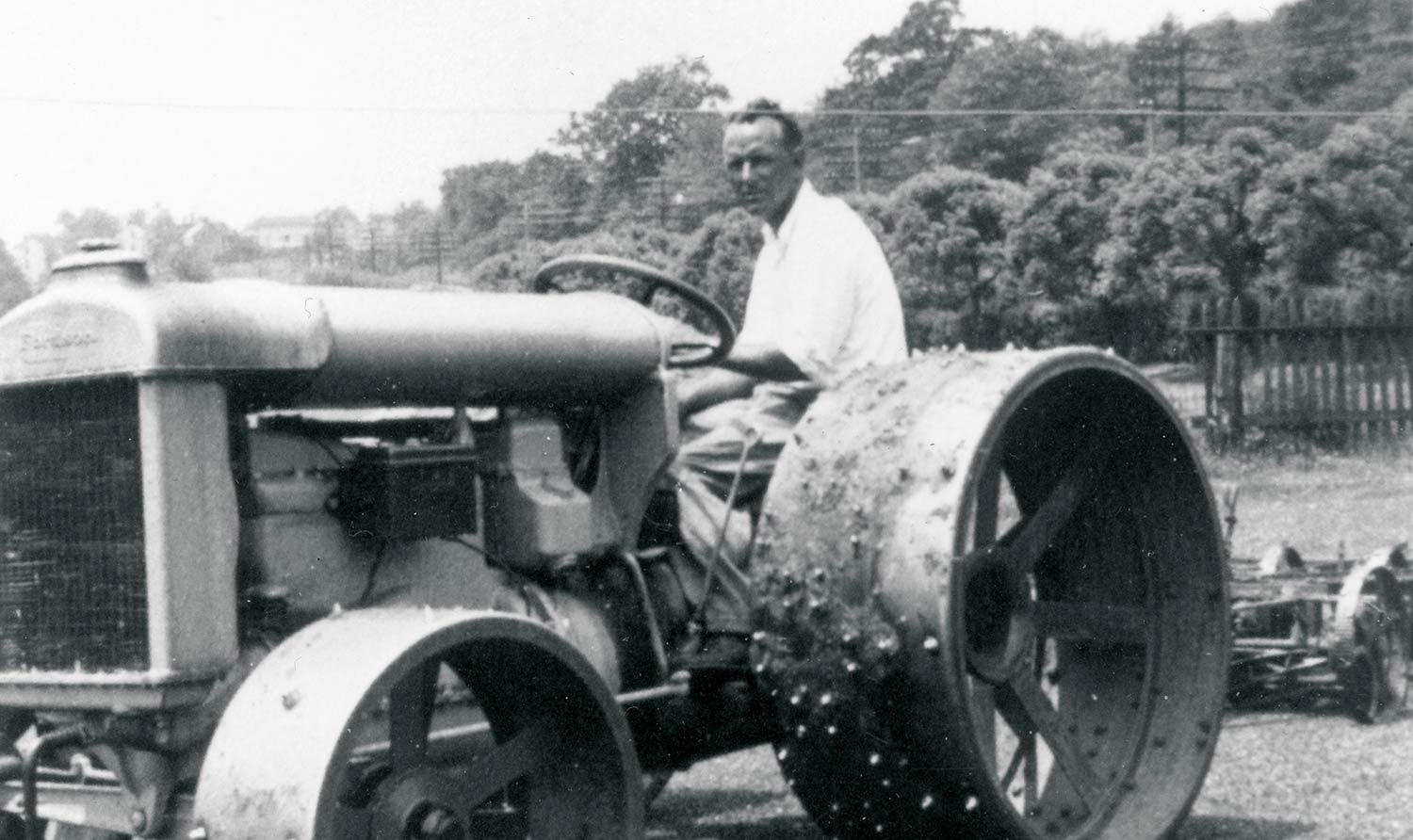
Latrobe Country Club is celebrating its centenary in 2020. When Arnold Palmer bought the club in 1971 he turned to his personal assistant Doc Giffin and said, “You’re secretary and treasurer”—and so Giffin remained until a management restructure 43 years later. A lifetime member, here Giffin pays tribute to a club where he has spent so much of his life
The touches of the caring hands of three generations of the Palmer family permeate the history of Latrobe Country Club as it celebrates its 100th anniversary in 2020.
It began a century ago when a teenager named Milfred Jerome Palmer—better known by his nicknames Deacon or Deke—joined the crew that was starting to build a nine-hole golf course on the edge of Latrobe, a small industrial and mining town some 50 miles southeast of Pittsburgh in Western Pennsylvania.
It continued through the next 50 years as Deke Palmer served the club’s membership as grounds superintendent from 1926 and, six years later, as the golf professional. Over those years he raised a family that included his first-born, Arnold, who was destined to become one of the most famous and popular athletes in history.
The family ties burgeoned in the years after Arnold Palmer, on the upper fringe of his greatest years on tour, acquired sole ownership of a property in somewhat rundown conditions in September 1971, and, with the infusion of an extensive amount of his own capital, brought it up-to-date with major refurbishing and the addition of a number of much-needed facilities.
Latrobe CC was assured of remaining a first-class country club operation following the loss of Arnold in 2016, as his daughter, Amy Saunders, has provided further investment in the club and facilities, under the leadership of Latrobe CC President and General Manager Don Emery.

“One of my greatest memories is how we were fortunately able to use the country club during the summer,” recalls Amy Saunders. “It was more a community club than a private club, never a pretentious place; it was where the kids congregated during the summer, at the pool. It was our summer camp, if you will.”
For more than 40 years, Latrobe CC existed as a quiet nine-hole club, while small tracts of land were gradually added to what had been a 63-acre farm adjacent to the Lincoln Highway (US Route 30). The biggest news of that era was when the great Babe Zaharias played in an exhibition match at Latrobe with Deacon and a barely teenage Arnold.
In his book, A Golfer’s Life, Arnold later wrote: “The Babe was one of the great women of American golf, with sparkling wit and a swing as strong as garlic. I remember how she stepped to the first tee, pegged up her ball and turned to the gallery and joked, ‘Okay ladies and gentlemen. Hold on for a second while I loosen my girdle’. She proceeded to nail the ball a mile down the fairway with one of the sweetest and most compact swings you’ve ever seen.”
Additional land purchased in the mid-1960s extended the property to 110 acres. Nine holes were added, creating the course that pretty much constitutes the 18-hole layout as it is today; a tight, rolling and testing 6,500 yards from the back tees with small, mostly-elevated greens and fairways lined by trees, primarily pines planted by Deke Palmer and his crew.
Over the years, the course has been nurtured under the supervision of just three men: Deke, his younger son Jerry after Deke’s death in 1976—whom Arnold later elevated to general manager—and Jerry’s right-hand man Martin Repko, who has been on the job since then.

Before Arnold acquired the club, he broke the course record during a casual round with local friends in 1969, shooting a 12-under-par 60 that remarkably included two bogeys. The record he supplanted was his own, a 62 he shot two years earlier while entertaining two state governors, Raymond Shafer of Pennsylvania and Jim Rhodes of Ohio. The 60 stands to this day, the closest challenge coming one summer when Bob Ford, the highly-respected Oakmont and Seminole professional, had a shot at breaking 60 but deliberately short-circuited his round in a show of respect for the man he so admired.
When the club became Arnold’s possession in 1971—an acquisition that his father, knowing its shaky financial and physical condition, didn’t think was wise—Arnold absorbed all the scattered shares in the owning Unity Land Company, the majority of which were held by the principals of the Latrobe Steel Company, the town’s biggest industry.
He immediately began the much-needed improvements and within a few years moved the ninth green to add tennis courts, built a proper halfway house, installed a modern irrigation system and practice range, added a main dining room and covered patio to the modest clubhouse, along with other remodeling.
Arnold also erected a new maintenance building with a wing utilized to house much of his memorabilia, including the red Toro tractor that became famous as a prop in a host of Arnold’s Pennzoil commercials.
Many of those and other commercials and television interviews were shot from scenic spots on the course, taking pictorial advantage of its verdant, pine-lined fairways and the colorful backdrop of nearby Chestnut Ridge, in the foothills of the Allegheny Mountains that run through central Pennsylvania.

The club has hosted many PGA Tour professionals, celebrities and politicians, among them former President George H. W. Bush. Latrobe has been the venue for many charitable fund-raisers, its proudest years coming in the 1990s when Arnold devised a two-day “Golf Gala” extravaganza. The highlight of the event, played in alternate years at Latrobe and nearby Laurel Valley Golf Club—where Arnold captained the 1975 U.S. Ryder Cup team—was a skins game in which he played with virtually every top player at that time; three different stars each year who appeared at his invitation, without reimbursement. Over its six-year span, the event raised some $6.5 million for the local hospital, one of many charitable efforts that has been and is still being put forth by the Palmer family.
“The centenary makes me think about how my grandfather was raised, how he worked at the steel mill and was taken over to the country club to work, and how that impacted my father,” reflects Amy. “He saw how hard my grandfather worked and it’s indicative of why my father felt so sentimental about the club, and he understood the positive impact the club has had on so many people.”
In a way, Deke Palmer is still keeping an eye on things. Years ago, when some of the towering pines that were planted in the early years were dying out, Arnold had an eight-foot stump saved from one such pine along the 18th fairway. Through the skills of a chainsaw artist, he had it converted into a wooden statue of his father, keeping a wary eye on each golfer as he or she climbs the inclined fairway to the final green of “his” golf course.
(Conditions of the coronavirus pandemic permitting, Latrobe Country Club will cap its celebration with a 100th Anniversary Celebration Dinner on October 3.)
Follow Us On


| Cookie | Duration | Description |
|---|---|---|
| cookielawinfo-checkbox-analytics | 11 months | This cookie is set by GDPR Cookie Consent plugin. The cookie is used to store the user consent for the cookies in the category "Analytics". |
| cookielawinfo-checkbox-functional | 11 months | The cookie is set by GDPR cookie consent to record the user consent for the cookies in the category "Functional". |
| cookielawinfo-checkbox-necessary | 11 months | This cookie is set by GDPR Cookie Consent plugin. The cookies is used to store the user consent for the cookies in the category "Necessary". |
| cookielawinfo-checkbox-others | 11 months | This cookie is set by GDPR Cookie Consent plugin. The cookie is used to store the user consent for the cookies in the category "Other. |
| cookielawinfo-checkbox-performance | 11 months | This cookie is set by GDPR Cookie Consent plugin. The cookie is used to store the user consent for the cookies in the category "Performance". |
| viewed_cookie_policy | 11 months | The cookie is set by the GDPR Cookie Consent plugin and is used to store whether or not user has consented to the use of cookies. It does not store any personal data. |